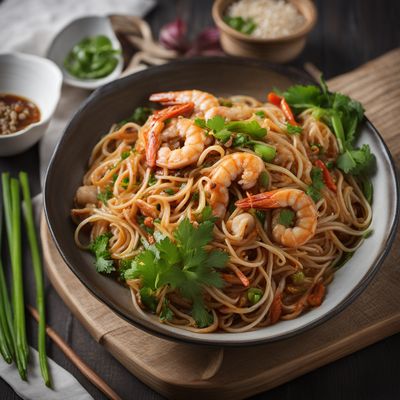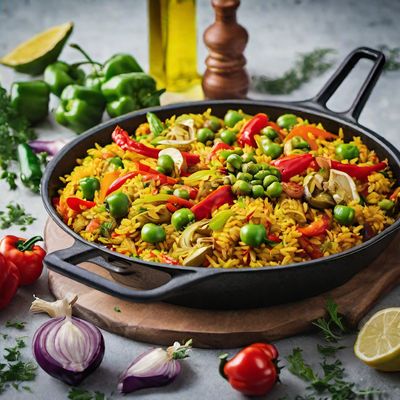
Ingredient
Rice semolina
The Versatile Grain: Exploring the World of Rice Semolina
Rice semolina is a coarsely ground flour made from rice grains. It has a pale yellow color and a slightly gritty texture. When cooked, it becomes tender and fluffy, with a delicate nutty flavor. Its fine granules make it ideal for absorbing flavors and sauces, making it a versatile ingredient in both sweet and savory dishes. It is commonly used in dishes like rice pudding, couscous, and pasta.
Origins and history
Rice semolina has its roots in various Asian and Middle Eastern cuisines. It has been a staple in these regions for centuries, with evidence of its use dating back to ancient times. Rice semolina was traditionally made by grinding rice grains into a coarse powder, which was then used to make a variety of dishes. Over time, it spread to other parts of the world and gained popularity for its unique texture and flavor.
Nutritional information
Rice semolina is a good source of carbohydrates and provides essential nutrients such as iron and B vitamins. It is low in fat and cholesterol and is gluten-free, making it suitable for individuals with gluten sensitivities.
Allergens
Rice semolina is gluten-free and does not contain any known allergens.
How to select
When selecting rice semolina, look for a product that is finely ground and free from any lumps or impurities. It should have a fresh aroma and a pale yellow color. Avoid packages that show signs of moisture or insect damage.
Storage recommendations
To maintain the freshness and quality of rice semolina, store it in an airtight container in a cool, dry place. Avoid exposure to moisture, as it can cause the semolina to clump together. Properly stored, rice semolina can last for up to a year.
How to produce
Rice semolina can be produced by grinding rice grains in a food processor or a grain mill until they reach a coarse texture. It can also be made by hand using a mortar and pestle, although this method requires more time and effort.
Preparation tips
Rice semolina can be cooked by boiling it in water or broth until tender. It can be used as a base for pilafs, risottos, or as a substitute for couscous or pasta. To enhance its flavor, toast the semolina in a dry pan before cooking. It can also be used to make desserts like rice pudding or halva.
Substitutions
If rice semolina is not available, you can substitute it with cornmeal or wheat semolina, although the texture and flavor may vary slightly.
Culinary uses
Rice semolina is commonly used in dishes like rice pudding, couscous, pilafs, and pasta. It can also be used as a thickening agent in soups and stews. Its versatility allows it to be incorporated into both sweet and savory recipes, making it a staple in many cuisines.
Availability
Rice semolina is commonly available in Asian and Middle Eastern grocery stores. It is also available in some supermarkets and online retailers that specialize in international ingredients.
More ingredients from this category
Recipes using Rice semolina » Browse all

Creamy Carrot Risotto
Velvety Carrot Delight: A Creamy Twist on Italian Risotto

Arancini di Riso al Burro
Golden Butter Rice Balls: A Savory Delight from Italy

Hokkien Mee with a Twist
Savory Delight: A Modern Twist on Traditional Hokkien Mee

Crispy Semolina Fritters
Golden Delights: Crispy Rava Bonda

Neapolitan Style Rice with Tomato and Basil
Sun-Kissed Rice Delight: Neapolitan Style Tomato and Basil Rice

Supplì al Telefono
Crispy Mozzarella Rice Balls: Supplì al Telefono Recipe

Colombian-style Vegetable Risotto
Savory Medley: Colombian-inspired Vegetable Risotto

Apple and Cardamom Risotto
Saffron-infused Apple and Cardamom Risotto: A Fusion of Italian and Saudi Arabian Flavors

Vegan Paella
Plant-Based Delight: Vegan Paella

Risotto with Bitto Cheese and Bresaola
Creamy Bitto Cheese Risotto with Savory Bresaola

Creamy Tomato and Basil Risotto
Sun-Kissed Risotto: A Creamy Delight of Tomatoes and Basil

Veracruz-style Pistachio Arancini
Pistachio Delight: Veracruz-style Arancini

